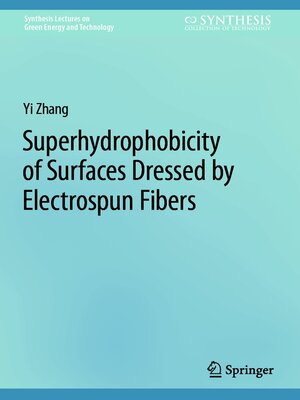Superhydrophobicity of Surfaces Dressed by Electrospun Fibers
ebook ∣ Synthesis Lectures on Green Energy and Technology
By Yi Zhang

Sign up to save your library
With an OverDrive account, you can save your favorite libraries for at-a-glance information about availability. Find out more about OverDrive accounts.
Find this title in Libby, the library reading app by OverDrive.



Search for a digital library with this title
Title found at these libraries:
| Library Name | Distance |
|---|---|
| Loading... |
This book provides insights into the wetting behavior on fiber-dressed surfaces and guidelines for developing superhydrophobicity based on electrospinning. In developing superhydrophobicity, electrospinning possesses the following advantages over other fabrication techniques. First, the electrospun micro- and nanofibers, which may also featured with secondary fiber morphology, provide sufficient surface roughness for superhydrophobicity. Second, electrospinning is considered an additive manufacturing technique, so the surfaces to be modified are not destroyed for superhydrophobicity. Third, the introduced electrospun structure is featured with high porosity with inter-fiber pores, allowing for a high vapor transmission rate, which is necessary in many applications such as wound dressing, gas sensor.However, books focused on developing superhydrophobicity using electrospinning are rarely found. Electrospinning is only introduced as one section in most superhydrophobicity-related books, and the mechanism of superhydrophobicity by different electrospinning-based methods lacks detailed explanation.







